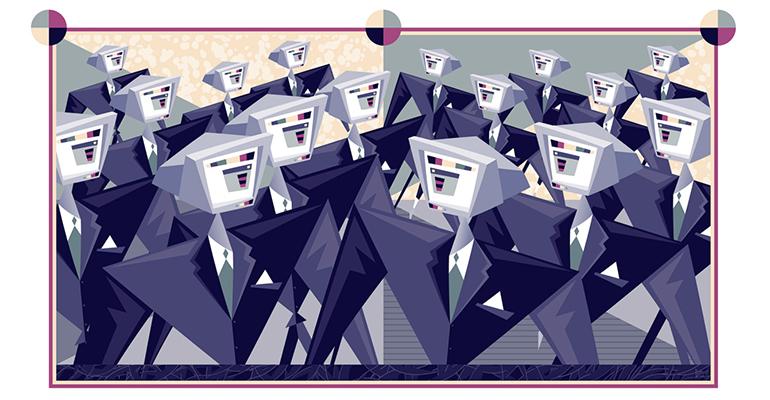For all of its strengths, one major weakness of the financial services industry has been its history of companies working in silos. Each company was focused on its own interests and growth, despite the many instances in which multiple companies were involved in a client’s portfolio. This “do it alone” approach even applies to technology. In many cases, companies designed and built their own proprietary technology solutions or utilized platforms that didn’t support a many-to-many environment where everyone could work one to one.
While this is still the case for some of the industry’s major players, others have begun to integrate with third-party fintech vendors to create client-facing solutions that are efficient and intuitive. The benefits of this collaborative approach include improved speed to market, the inclusion of best-of-breed technologies, and the ability to plug and play (via the use of APIs and components).
Efficient. Straightforward. Those aren’t normal terms one usually equates with the financial services industry, but long before the pandemic forced a notoriously old-school industry to shutter its offices, change was underway. With the advent of fintech, companies have slowly begun taking this collaborative approach and financial services companies have started putting their siloed systems aside to start collaborating.
Need for Change
Five years ago, the financial services landscape looked a lot different. Many of the processes used in the industry were inefficient and not cost-effective. A lot of time and money were spent on procedures that could have been retired had the industry embraced the technology revolution much sooner. Not only were the existing processes outdated, they were different at every firm.
This company-by-company approach limits the ability for collaboration between companies. An example of this inefficiency was how investment companies and wealth management firms shared, reviewed and approved marketing collateral to eventually be shared with advisors. With each company having its own process, and outdated ways of sharing the content, the result almost always created a backlog for marketing review teams approving content for third-party firms and, ultimately, their advisors.
There was no valid reason for the financial industry to be light-years behind other industries in adopting technology—especially since everyone in the industry benefited from technology experiences they have in their day-to-day lives (e.g., using their cellphones to purchase flights and make dinner reservations).
Creating a Financial Ecosystem
Although considered competitors, financial services companies know that a common and highly adopted technology can solve multiple problems and resolve additional pain points that handicap them all. Individually, many financial institutions have done a good job with their respective clients, but the industry is varied and constantly changing. To improve the user experience, we need to work smarter, not harder. Doing so means creating solutions that not only benefit individual companies but also improve the industry as a whole.
The Secret Is Simple
Not to negate the critical importance that software engineers and fintech experts bring to the table, but a key revelation has been that you don’t need to be a fintech veteran to drive fintech innovation. You simply need to have an idea and then work with those who can help create change. To evolve we must adapt—and that is what has been happening recently. Let’s continue demystifying fintech as counterintuitive to our conservative approaches—and dispel cynicism to serve a great purpose.
Denise Wypiszenski is co-CEO of the 4U Platform.





